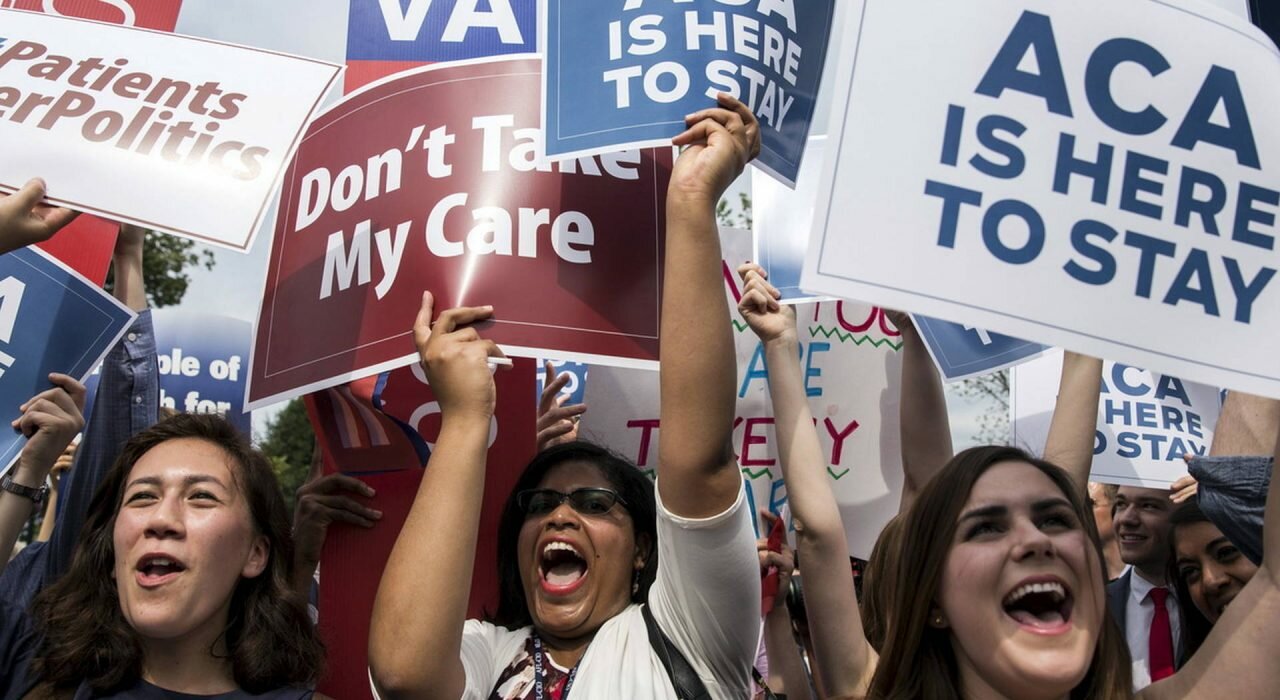
Below are three flip cards highlighting the 2020 presidential candidates, their stance on health care and a glossary of relative terms. If you would like to see additional definitions or resources on this page, send your thoughts to [email protected].

President Donald J Trump (R)
Presumptive Nominee
About
After winning the 2016 election and enduring a troublesome first term and impeachment proceedings, the incumbent U.S. President, Donald J. Trump, is expected to cite his economic successes to get reelected.
Learn More
Support Single Payer Healthcare System? No
Support public health insurance option? No
Eliminate private health insurance? No
Import prescription drugs from Canada? Yes

Senator Bernie Sanders (I)
Democratic Candidate
About
A fiery Independent, Sanders has returned after losing to Hillary Clinton in 2016 with a democratic-socialist platform that included free college tuition. Sanders' stance on these issues have steered policy debate within the Democratic Party ever since.
Learn More
Support Single Payer Healthcare System? Yes
Support public health insurance option? <?>
Eliminate private health insurance? Yes
Import prescription drugs from Canada? Yes

Former Vice President Joe Biden
Democratic Candidate
About
Using his time alongside President Barrack Obama as a unique advantage, Biden intends on advancing that legacy on key issues like health care and the climate crisis. Before serving as Vice President, Biden represented Delaware in the U.S. Senate for nearly four decades.
Learn More
Support Single Payer Healthcare System? No
Support public health insurance option? Yes
Eliminate private health insurance? No
Import prescription drugs from Canada? <?>
Affordable Care Act (ACA):
The comprehensive health care reform law enacted in March 2010 (sometimes known as ACA, PPACA, or “Obamacare”). The law has 3 primary goals: Make affordable health insurance available to more people. The law provides consumers with subsidies (“premium tax credits”) that lower costs for households with incomes between 100% and 400% of the federal poverty level. Expand the Medicaid program to cover all adults with income below 138% of the federal poverty level.
Health Insurance Marketplace:
The Health Insurance Marketplace, also known as the “Marketplace” or “exchange,” provides health plan shopping and enrollment services through websites, call centers and in-person help. The Marketplace is operated by the federal government and is available at HealthCare.gov. Some states run their own Marketplaces.
Medicare for All:
Medicare for All is the term for Universal Health Care used by many democratic candidates. The Medicare for All Act will provide comprehensive health care to every man, woman and child in our country – without out-of-pocket expenses. No more insurance premiums, deductibles or co-payments. Further, this initiative would improve Medicare coverage to include dental, hearing and vision care.
Medicare for All Act of 2019:
The latest endeavor to create a national health care system in the House and Senate. The bills both prohibit cost-sharing (e.g., deductibles, coinsurance, and copayments) and other charges for covered services. Additionally, private health insurers and employers may only offer coverage that is supplemental to, and not duplicative of, benefits provided under the program.
Medicare Buy-In:
As another option for expanding Medicare coverage, this would allow people who were not previously eligible for Medicare to purchase their own plan from the government. This might include people who are between 50 and 64 years old, or individuals who don’t receive health coverage through their employers.
Medicare for More:
This is a general term for expanding Medicare coverage to include more individuals. Policymakers’ suggestions range from including a larger age range – e.g. starting from 50 years old – or setting up a pathway to gradually expand Medicare to cover all U.S. citizens.
Open Enrollment:
Open enrollment is a window during which individuals and employees may add or drop their health insurance or make changes to their coverage. Open enrollment applies both in and out of the Marketplaces. Some state-run Marketplaces may have differing enrollment dates than the Federal Marketplace. This year’s Federal Marketplace enrollment begins November 1, 2019 and runs through December 15, 2019.
Pre-Existing Conditions:
A health problem, like asthma, diabetes, or cancer, that a patient had before the date that their new health coverage starts. Insurance companies cannot refuse to cover treatment for pre-existing conditions or charge patients more as a result of these conditions.
Public Health Insurance Option:
The public health insurance option, also known as the public insurance option or the public option, is a proposal to create a government-run health insurance agency that would compete with private health insurance companies that are already operating in the United States.
Single Payer Health Care:
Single–payer health care is a type of universal health care financed by taxes to fund essential health care for all residents. Costs are covered by a single public system (hence ‘single–payer‘).
State Marketplace:
Some states run their own Marketplace. If this is the case, you will use the state’s website to enroll in individual, family or small business health coverage instead of HealthCare.gov. States with their own Marketplaces are: California, Colorado, Connecticut, District of Columbia, Idaho, Maryland, Massachusetts, Minnesota, Nevada, New York, Rhode Island, Vermont and Washington.
Universal Health Care:
Universal Health Care is a system that provides quality medical services to all citizens. The federal government offers it to everyone regardless of their ability to pay. When policymakers discuss expanding health care access, this is the broadest concept that they consider, i.e. Medicare for All is an example of universal health care.
Previous
Next

















